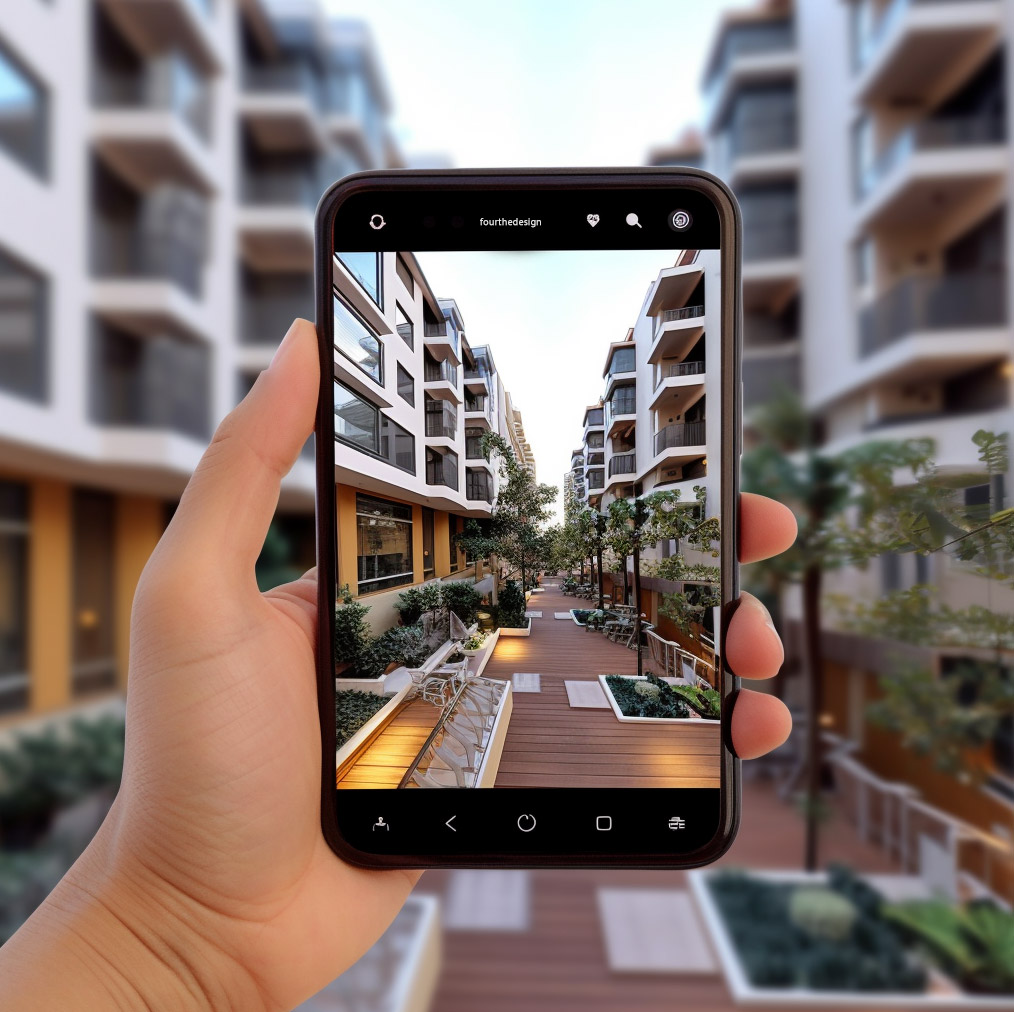AR in Architecture and Real Estate
Enhancing Design with Immersive Visualization

The fields of architecture and real estate have long relied on visual representations to convey design concepts and showcase properties. However, traditional methods such as 2D drawings and physical models often fall short of providing a comprehensive and immersive experience for clients. In recent years, augmented reality (AR) has emerged as a powerful tool, revolutionizing the way professionals in architecture and real estate visualize, communicate, and interact with their projects.
AR in Architecture – AR Technology: Blending the Real and Virtual
One of the significant advantages of AR in architecture is its ability to provide clients with a tangible sense of space and scale. Instead of relying solely on blueprints or computer-generated images, clients can use AR to visualize a building or space in three dimensions directly on-site. They can walk through virtual rooms, explore different finishes and materials, and get a real-time understanding of spatial relationships. This level of immersion enables clients to make informed decisions and provides architects with valuable feedback throughout the design process.
Transforming Real Estate Experiences with AR
AR in Real Estate: Interactive Property Showcasing
In the real estate industry, AR is transforming the way properties are showcased to potential buyers or tenants. With AR, prospective clients can view and interact with virtual representations of properties, even if they are still in the development stage. They can virtually walk through apartments, visualize different layouts and configurations, and even experience the surrounding neighborhood. AR-powered visualization tools enable real estate agents to offer a more engaging and personalized experience, helping clients to envision themselves living or working in the space.
Driving Marketing and Promotions with AR
Moreover, AR can enhance the marketing and promotional efforts in architecture and real estate. With AR-enabled apps and platforms, professionals can create immersive presentations and interactive virtual tours that go beyond static images or videos. This captivating and interactive content attracts potential clients, increases engagement, and sets projects apart from the competition. AR also enables architects and real estate developers to showcase their portfolios and capabilities in a more compelling and memorable way.
Innovation in Greece: Embracing AR’s Potential
Implementing AR in architecture and real estate requires a combination of 3D modeling, rendering, and AR development skills. Many professionals partner with specialized agencies or hire in-house teams to create customized AR experiences. Fortunately, there are also user-friendly AR platforms available that allow architects and real estate agents to create basic AR visualizations on their own, even with minimal technical expertise.
Looking Ahead: Future Possibilities
As AR technology continues to advance, we can expect even more exciting possibilities in architecture and real estate. Features like real-time collaboration, interactive design changes, and AI-driven virtual staging are just some of the potential developments on the horizon. AR is reshaping the way professionals in these industries visualize and present their work, enhancing communication, and providing clients with unparalleled experiences.
Conclusion
In conclusion, augmented reality is revolutionizing the fields of architecture and real estate, transforming the way professionals visualize, communicate, and market their projects. AR enables immersive and interactive experiences, improves client engagement, and empowers decision-making in the design and property selection processes. As technology continues to evolve, embracing AR in architecture and real estate will be crucial for staying competitive and meeting the ever-growing expectations of clients in the digital age.



